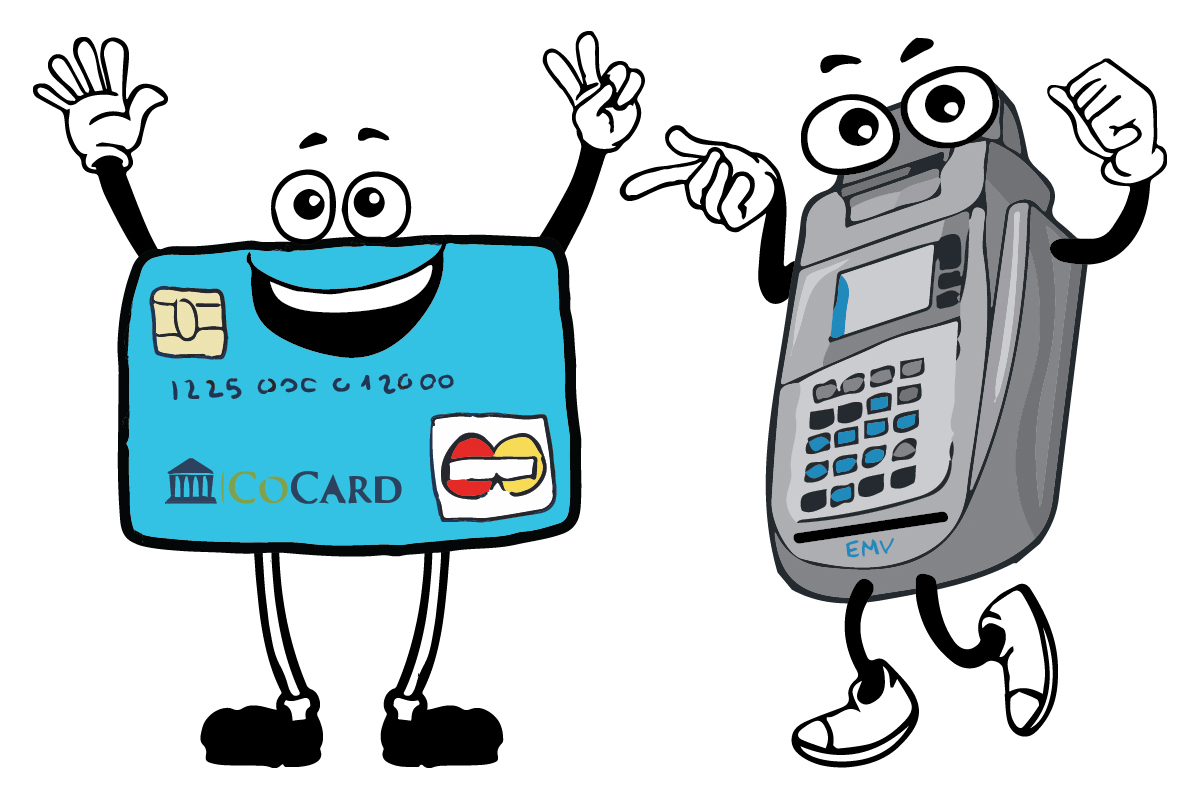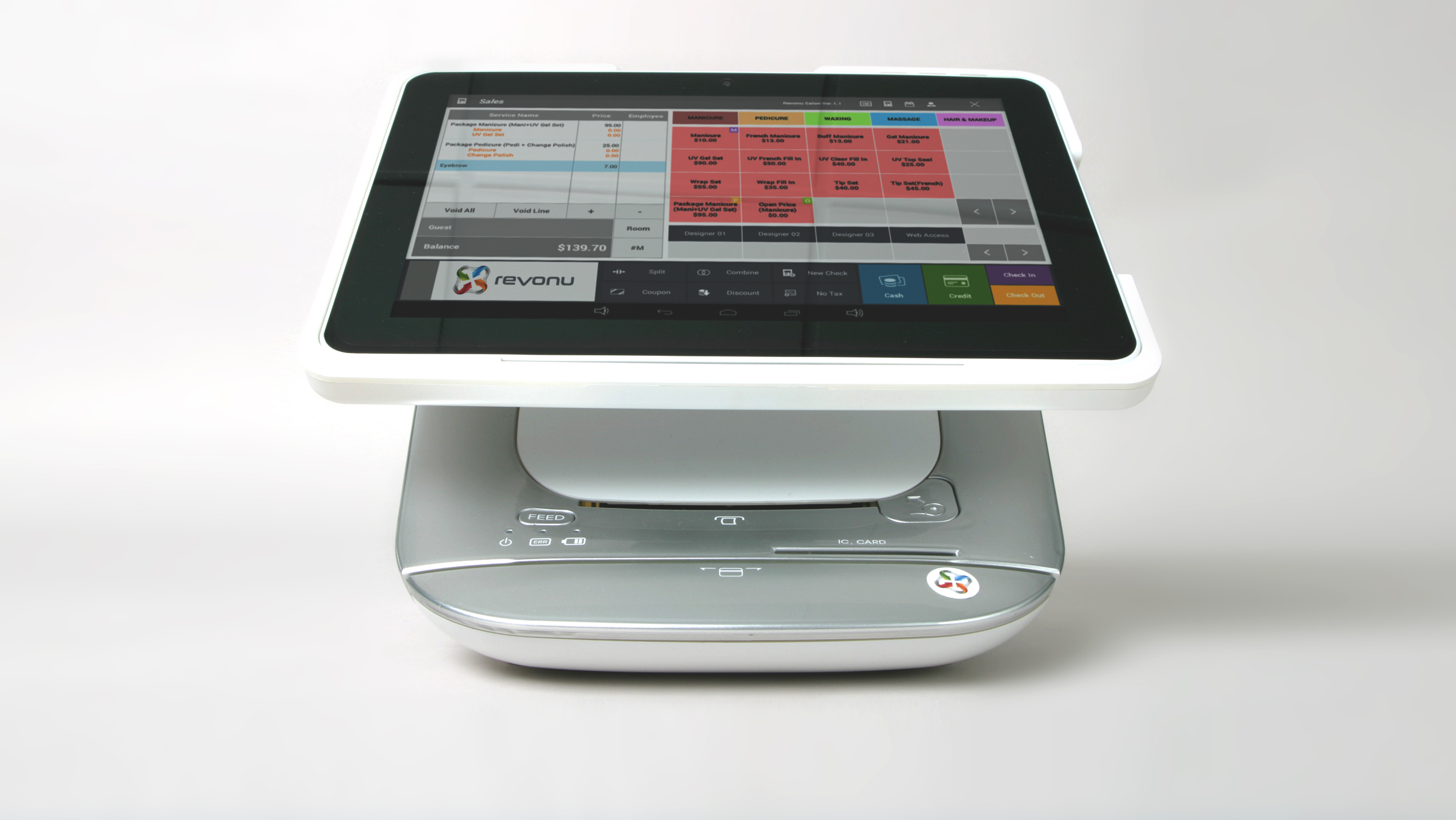The EMV Files: A Conversation with Chip and Terminal
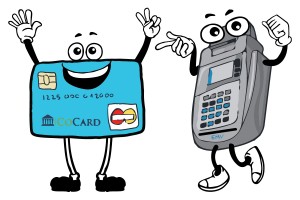
Last week we introduced Chip and Terminal, who have a lot to say about EMV, mainly because they are the main components in EMV technology. So we were lucky enough to be able to book a slot on their busy schedule this fall season to interview them and ask them a few questions. Personally, we think they’d be great on Bravo, but they might have competition with a real housewife or two.
COCARD: Hi Chip. Hi Terminal. We’re so glad that we could ask you two a few questions about EMV. Really, we’re honored. Could you just start by telling us a little bit about yourselves?
Chip: Sure, well I’m Chip, and I’m the small chip that’s embedded in credit cards with EMV technology. Banks have already started transitioning to cards including yours truly, and plan on having all cards in the US utilizing EMV technology within five years.
Terminal: I’m Terminal, and all cards containing chips, will be dipped into terminals to be read. I like to say that I give new meaning to dipping the chip. I provide a one-time code to authenticate the card. Because of this, your data is protected, preventing a person from stealing a code that is only good for one transaction.
COCARD: So when did you first realize that you worked so well together, that you were a great team?
Terminal: I’ll take this one Chip. We’ve had a couple of countries really benefit from EMV technology. There’s the UK, which reduced fraud by more than half between 2004 and 2013 upon implementing EMV cards. Then there’s Canada, eh, that started the EMV roll-out in 2003 and reported fraud of $29.5 million (CAD), down 79% from 2009, which was $142 million (CAD). So I would say that it’s taken some time to see the effects, but in the past few years, we’ve really seen the impact that EMV cards have had in reducing fraud for many countries around the world.
COCARD: EMV is new for many business owners. So I’m sure you understand how such a change might make people anxious. What would you say to assuage the fears of business owners everywhere?
Chip: Well, first the sky is not falling. It might seem like it, but it’s not. The proof is that it’s already been successful in other places, and the US is simply one of the few developed nations that has not adopted this technology. EMV, through its authentication process, is really what makes these cards, our cards, more secure. So they are a safe and secure way to pay for things. We think that any business owner can appreciate the feeling of comfort that security brings. The big thing for business owners to remember is that banks have a five year plan and that only 21% of US cards will have the embedded chip by the October 1st liability shift..
COCARD: Anything else you’d like business owners out there to know?
Terminal: We just want you all to stay informed. Keep learning. The more you know, we think the less you’ll feel out of your element with something that can benefit your business.
COCARD: Thanks Chip. Thanks Terminal. You were both great. We appreciate that you were able to take time out of your busy schedules—you two are in high demand—to spend a few minutes with us at COCARD. Have a great day.
Chip: You too.
Terminal: Yeah, thanks COCARD.
Read MoreRead MoreMeet a member of YOUR COCARD support team, Salvador
 Salvador was born in San Bernardino, CA and raised in Salt Lake City, UT. He now makes his home in Duluth, GA with his wife, Nelly and daughter Evelyn. Salvador plays soccer, hikes and loves taking pictures (mostly of Evelyn).
Salvador was born in San Bernardino, CA and raised in Salt Lake City, UT. He now makes his home in Duluth, GA with his wife, Nelly and daughter Evelyn. Salvador plays soccer, hikes and loves taking pictures (mostly of Evelyn).
He is a great cook and thankfully likes to eat what he cooks!
When I asked Salvador if he could meet anyone in the world who would it be and why he responded: myself, it would be very interesting to see me through someone else’s eyes.
Around the office Salvador is known for his relentless testing abilities, we like to think of this as his super power. If we have new technology or equipment we are beta testing we want Salvador to do the testing so that we can repair, replace or upgrade before our customers ever use the technology or equipment. He really is a super hero!
Call our support team and ask for Salvador, he is ready to support your POS and your merchant account with one call.
Read MoreRead MoreDon’t Get SLAMMED!
Dictionary
slam
noun ˈslam
Definition of SLAM
1
: switching business owners from their current merchant services provider to another service provider without the business owners knowledge or authorization.
Examples of SLAM
“He/she called for software support and was slammed by another provider”
Don’t be slammed
To Learn More About SLAM
Call COCARD at 800-317-1819 or email support@cocard.info
Read MoreRead MoreA Sky Without Limits, or Infinity and EMV
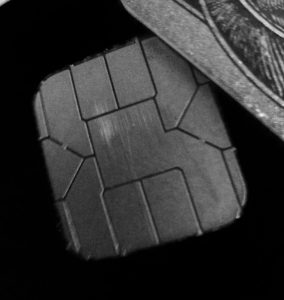 Chicken Little once said that the sky is falling. Yet it still remains intact above us. So while the transition from magnetic stripe to EMV might seem like a shift of cataclysmic proportions, the sky is not falling. Your company will successfully transition from magnetic stripe to EMV (many already have), and next time you look outside your window, you’ll see the billowy clouds resting above, and not on the ground.
Chicken Little once said that the sky is falling. Yet it still remains intact above us. So while the transition from magnetic stripe to EMV might seem like a shift of cataclysmic proportions, the sky is not falling. Your company will successfully transition from magnetic stripe to EMV (many already have), and next time you look outside your window, you’ll see the billowy clouds resting above, and not on the ground.
Yet we also understand that with anything new comes fear. It’s normal. So we’ve put together a few facts to calm your nerves. We want you—the sagacious business owner that you are—to continue to make calm, smart decisions over the course of the transition.
Are you with us? Well, here goes:
- A transaction using EMV technology will take around 60 seconds compared to under 2 seconds with a magnetic stripe card. Magstripe cards are swiped and provide the terminal with the credit card number and expiration date, which can be easily copied by a card reader. EMV terminals, on the other hand, require customers to “dip” the chip and verify customer data, which takes just a short while longer. During this time, the Chip and Terminal begin a conversation. Chip says, “Please authorize this transaction.” Terminal replies, “I’ll need to make sure you’re valid. I’ll also need to provide your card with a special code unique to this transaction because we can’t have any fraudsters trying to take your info.” Chip responds, “Sounds great.” Terminal says, “Now please sign, or enter your pin number.” EMV takes a few more seconds than a magstripe transaction, but your data is more secure.
- Don’t panic. Although EMV has been adopted in Europe for over a decade, cards in the US still have a magnetic stripe. Card companies have accounted for the ongoing transition by allowing terminals to still accept magnetic stripe cards. Card issuers expect the full transition to take anywhere from three to five years.
- The term “liability shift” sounds pretty intense, like if you’re not prepared, the earth will shift, and you’ll fall off the edge of it. Oh, Copernicus. Well, flat-earth jokes aside, the liability shift is not that cruel. It is simply a method to eliminate fraud. Starting October 2015, the party—either the business or banking institution—with the lesser technology will be responsible for the cost of fraud. Instead of thinking of the liability shift as a way for others to make money off of your hard work, think of it instead as a way to ensure all parties are working together to eliminate fraud, which cost US consumers $16 billion last year alone.
In short, the sky is not falling, and EMV is not the end of the world. Instead, it seems to be the beginning to new possibilities for business owners. It might be an uncharted territory, but EMV will provide companies with the tools to chart their own course by allowing them to directly address fraud, a concern that leaves many involved feeling powerless. So next time you look at the sky, we at COCARD hope that you view it with possibility, and nothing less than that.
Read MoreRead MoreEMV FAQs
 Watch out—the future has arrived. And they call it EMV. As the target date for businesses to accept EMV payment cards draws near, make sure your business is ready to transition seamlessly from magnetic stripe cards to EMV. October 1st is upon us. Are you ready?
Watch out—the future has arrived. And they call it EMV. As the target date for businesses to accept EMV payment cards draws near, make sure your business is ready to transition seamlessly from magnetic stripe cards to EMV. October 1st is upon us. Are you ready?
This list of FAQs will help you answer lingering questions and stay abreast of new developments with EMV technology.
What does EMV stand for?
It is an acronym for its developers Europay, Mastercard and Visa.
What’s the main difference between the cards we use now and EMV cards?
Magnetic stripe cards are the cards currently used in the United States and have a magnetic strip on the back. These cards are swiped through a card reader and contain static financial information that can be easily duplicated by card readers. EMV cards, on the other hand, contain a microchip that produces a new code with each transaction, preventing fraudsters from gaining access to sensitive data on the card. EMV cards are therefore more secure than magnetic stripe cards, and are responsible for a worldwide decrease in fraud.
How will switching to EMV directly benefit my business?
Great question. EMV will benefit your business threefold. First, your risk of chargebacks based on fraudulent transactions is greatly reduced. Whereas banks bore the brunt of the financial weight for fraud in the past, companies that have not adopted EMV technology will now be held accountable starting October 1st, when the liability shift starts. Adopting EMV technology will protect your business from costs associated with fraud. Second, as technology evolves faster than you can say Darwin, EMV is simply the beginning. Most of the hardware that accepts EMV will also allow your business to accept payment innovations such as mobile apps (i.e. mobile couponing and loyalty programs) and contactless payments. Third, you will be able to accept payment from visitors from other countries. Much of the world has already adopted this technology and no longer uses magnetic stripe cards. So prepare your business to increase profits by switching to a payment technology that more people can use.
I’ve been hearing the term “liability shift” a lot lately. What exactly is it?
It is when liability for card fraud switches from banking institutions to merchants. On October 1, 2015, businesses that aren’t updated to accept EMV cards will be held responsible for card swiped transactions on EMV capable cards that are found to be fraudulent. And penalties can be costly, particularly for small businesses. However, if your business is EMV-compatible, you will not be held accountable for fraudulent transactions.
As a small business owner, every penny counts. How much will it cost me to install an EMV-capable terminal?
EMV card readers cost between $400 and $700 but are often discounted through payment processors such as COCARD. Speak with us today—your EMV solution might even be free.
One thing to remember is that as the United States fully transitions to using EMV technology, cards will include both the microchip and magnetic strip. The process is expected to take anywhere between three and five years.
COCARD aims to develop our reputation as experts on EMV. We will continue to keep you posted on new developments and new ways of looking at this groundbreaking technology.
Read MoreRead MoreThe Basic Guide to EMV
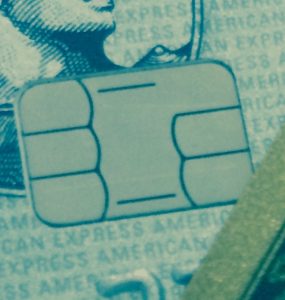 Maybe you’ve already gotten a glimpse; a customer pulls a credit card out of his or her wallet, and as they swipe, you see a chip that’s embedded in the card. Don’t freak out. You don’t have to work at Google to get it. You just have to understand a few simple points about this new chip.
Maybe you’ve already gotten a glimpse; a customer pulls a credit card out of his or her wallet, and as they swipe, you see a chip that’s embedded in the card. Don’t freak out. You don’t have to work at Google to get it. You just have to understand a few simple points about this new chip.
Let’s demystify the mystery, decode the data, and simplify the complexity of EMV.
Use these tips as a basic guide to bring your company into a new era of safer, more secure transactions.
• Update, update, update. EMV technology is new to the US, and the truth is that not all POS machines are already EMV-capable. What this means is that you should check both your hardware and software to see which components (whether some or all) should be updated, which brings us to our next point.
• Stay connected with all parties involved. No EMV machine is an island unto itself. Your POS system requires cooperation with your bank, processor, and other individuals or companies connected to your POS system. Find out what they have to say about EMV to stay current with any updates regarding the technology. It will allow for a more seamless transition.
• Think smart. Plan ahead, and stay one step ahead of the game. Once you’ve got the ball rolling on updating your POS system, consider other ways in which your system can stay smart. This includes considering a cloud-based POS or tablet solution like Revonu POS by COCARD.
• Consider COCARD. If you are considering a POS provider, we have a number of options available for POS systems and can help you decide if a new system is right for you.
• Carry an umbrella. You should always plan for a rainy day. Although it’s unlikely, there is always the slight possibility that your POS will break down. It isn’t fair, we know; but stuff happens. You should make a back-up plan to prepare for the off chance of the unexpected. Did you know that the Revonu package by COCARD includes a FREE EMV terminal?
• Teach your employees to fish. We promise, this is the last metaphor. Here at COCARD, we believe that employees should be trained in the ways of EMV. That means that they should understand the technology and know how to use it. After all, having truly knowledgeable employees makes the company look good.
So that’s it, six key points to remember about EMV. As you continue to learn more about this new technology, use this as a basic guide during your company’s transition to EMV.
The EMV experts at COCARD are available to answer any questions you may have!
800-317-1819 or support@cocard.info
Have you heard about REVONU?
 The complete POS solution for YOUR business!
The complete POS solution for YOUR business!
Let us tell you about our simple and cost-effective combined point of sale solution. It’s Revonu; helping main street generate more revenue.
For more information about Revonu call – 1-800-317-1819 option #2, visit us on the web at: http://cocard.info/products/revonu/ or email revonu@cocard.info
Read MoreRead MoreSay goodbye to a one-size-fits-all solution for your business and say hello to Revonu!
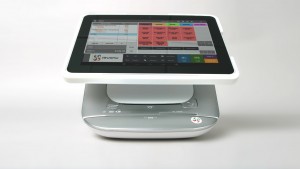 Integrated hardware,cloud software & payment solutions.
Integrated hardware,cloud software & payment solutions.
Spend more time on the front-end of your business with our simple and cost-effective combined point of sale solution. By pairing state-of-the-art hardware with reliable cloud software and PCI compliant merchant processing, we’ve eliminated the hassle of dealing with multiple providers while allowing access to your business 24/7.
For more information about Revonu call 1-800-317-1819, email revonu@cocard.info or visit Revonu at http://cocard.info/products/revonu/
Read MoreRead MoreEMV and the Challenges that Face Payment Processing

EMV and the Challenges that Face Payment Processing
In order for a business to run successfully, the simple act of paying for a product or a service using a credit card or a debit card should be efficient, fast, and most importantly, safe. And because it is money that is at stake here, there are a lot of regulations in place to make sure that the processing of payments using a card is safe and secure. One of the ways that makes card payments more secure is the EMV technology, where payment cards used in an ATM and POS terminals have been embedded with microchips. This form of payment technology has long been in use and is widely accepted in many regions such as Europe, Canada, and Asia Pacific. Ironically, the US – considered to have the largest number of plastic card users – is one of the countries that have not – yet – fully optimized this otherwise global standard.
The Advantages of EMV
Note that an EMV-embedded chip is a lot more secure than the traditional magnetic stripe method, especially when it comes to face-to-face credit/debit card transactions. Theft and credit card fraud is rampant now more than ever, but using this embedded chip has added another layer of protection against consumer fraud. Once the card has been inserted into a terminal, the payment will then be authenticated and processed using the EMV network. Also, the chip contained within the card is hard to duplicate, making it very hard for swindlers to duplicate your customer’ cards.
What Does This Mean for You?
If you are in the process of upgrading your accepted payment methods, it is important that your POS terminal also be equipped with an EMV chip card reader. You will create more credibility and garner more customers in the marketplace by utilizing this more safe and secure payment method. There will be increased consumer confidence which will drive up more sales and increase your profits in the long run.
What Happens When You Don’t Update
There have been changes made to the EMV Liability Shift. Currently, if a payment processing transaction has been approved and it turns out to be fraud, the card issuer is the one that absorbs the loss. With the new rule, however, liability shifts to the merchant who has not implemented the EMV technology. If and when fraud happens, the responsibility falls on the party who makes the transaction – which means YOU, the business owner.
How to Prepare Your Business for EMV Migration
All you have to do is update your card reader. It’s that simple. If you upgraded your POS recently, then your terminal is most likely already EMV-ready. Whatever the case may be, all you have to do is contact CoCard and we’ll help you understand what changes you need to make to prepare your business for the EMV migration.
Improving on your current payment processing system is not that complicated – and with CoCard’s help you will be able to implement EMV into your business.
Read MoreRead More


